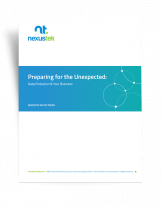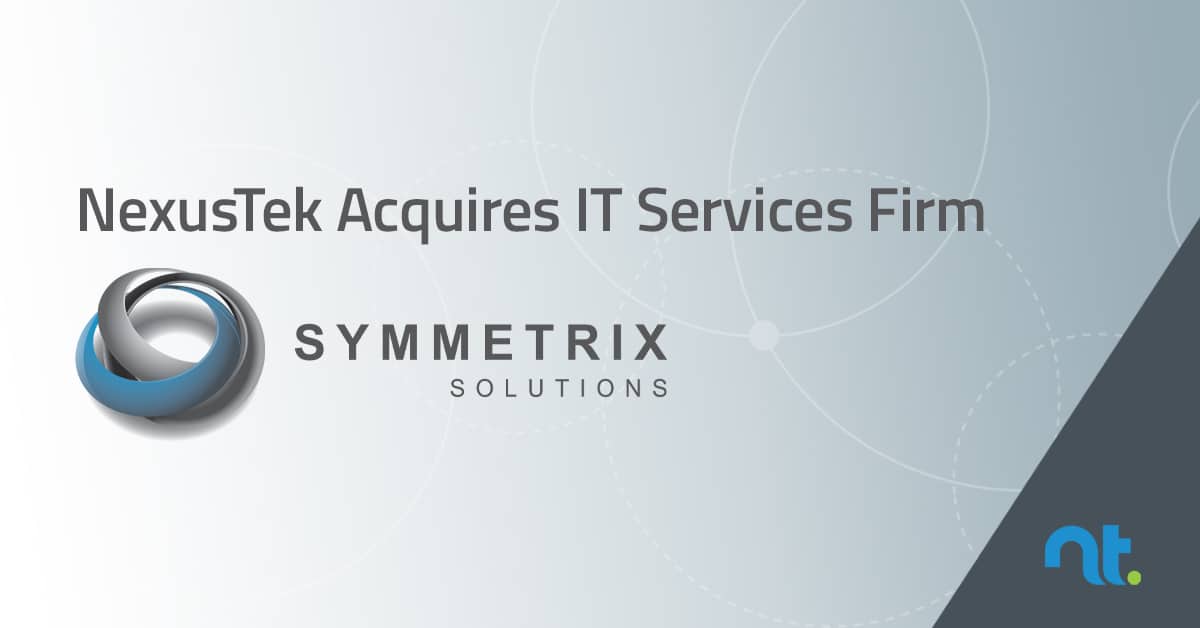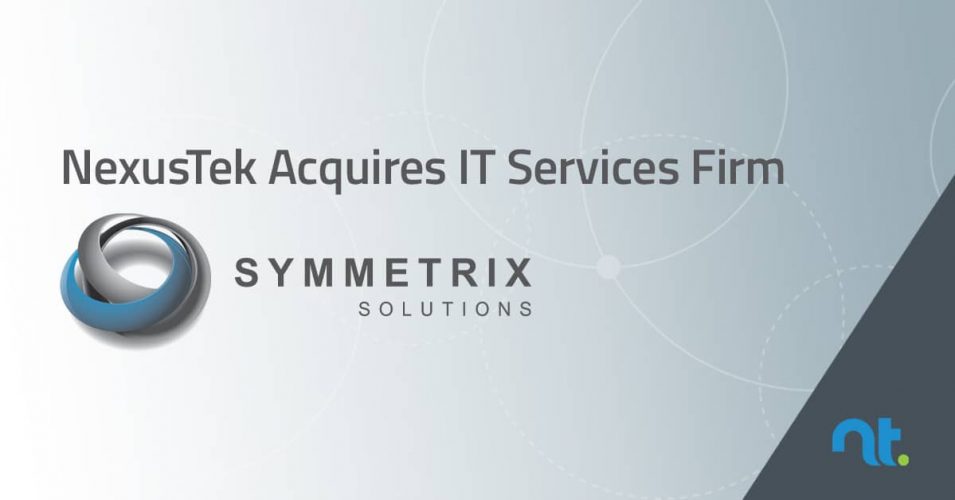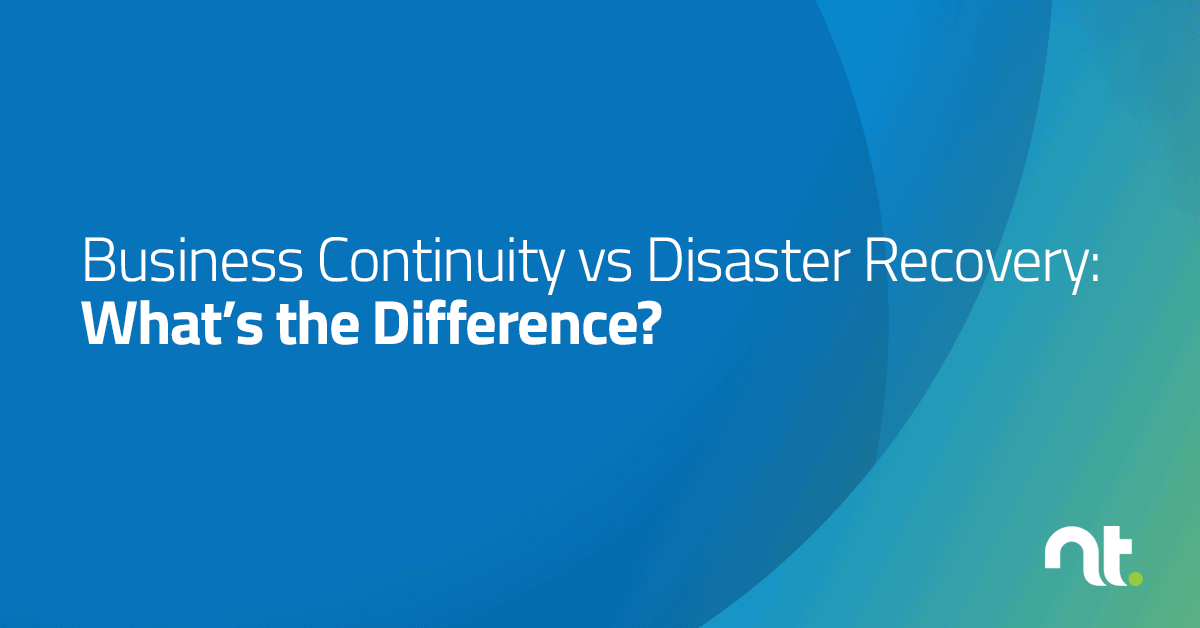READ TIME: 5 MIN
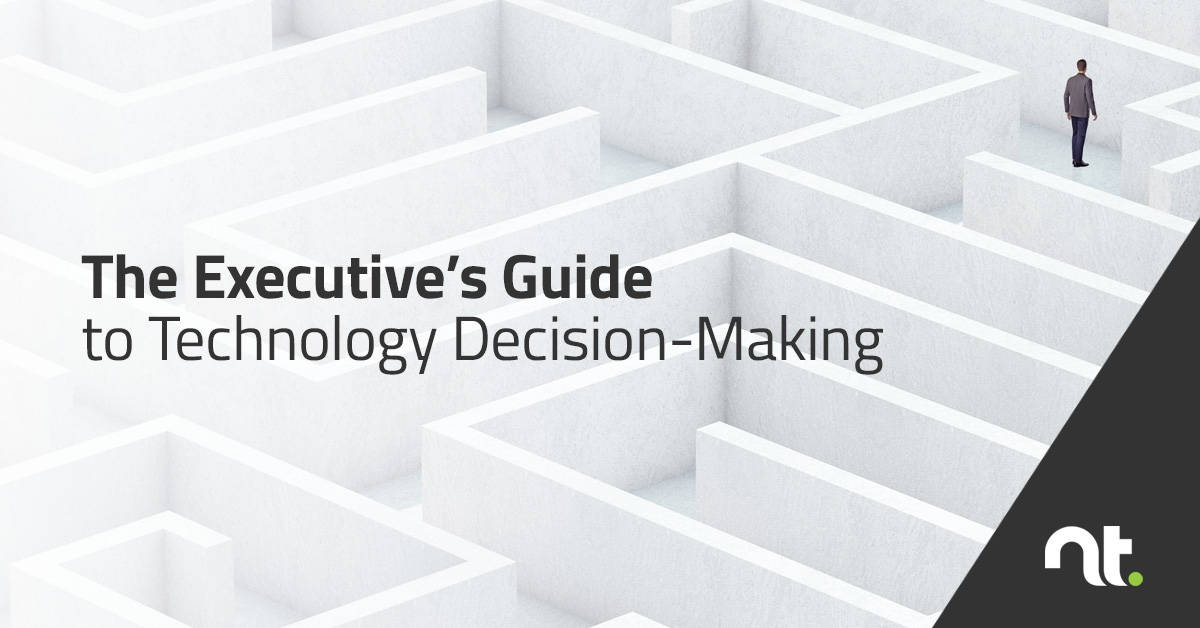
The Executive’s Guide to Technology Decision-Making
As a senior leader, you’re responsible for determining your company’s strategic goals and empowering your teams to execute. The technology your business utilizes plays a crucial role in your workforce’s ability to perform the tasks necessary to achieve those goals. In the digital age, having the right technology is no longer a “nice to have” because business operations and the technology that supports it are closely tied to the success of your business.
Even if you’re not a technology expert, business leaders are becoming increasingly important in the technology decision-making process because the latest technologies are enabling business objectives.
What considerations must be made in technology decision-making? Let’s walk through some of the factors that need to go into your decision-making process:
Align Technology Needs with Business Goals
It sounds simple enough and many executives can easily identify the basic technology required to operate. In addition to meeting the immediate technology needs to perform everyday tasks, it’s equally important to evaluate what technology should be implemented to achieve business goals.
For example, a common business goal across multiple industries is to “Improve Customer Experience.” Let’s say for the purpose of this example, you determine one of the ways your company will achieve this is by “enhancing your digital engagement with customers” (e.g. online, mobile applications, customer service and buying experience). You decide that when your sales team engages with customers, you want them to be able to use mobile devices to provide customers with digital information and perform remote transactions in real-time.
As you continue to drill down on your business goals and get more specific to determine “how will we achieve this?”, the answer to “what technologies are required to enable and support this goal?” will become clearer. Focusing on technology that will support the achievement of business goals will help improve ROI, and with creating and prioritizing your IT budget.
Budget
Many executives have experienced that awkward moment of assuming that they were on budget for their IT expenses only to find that they have gone over budget due to unforeseen expenses or have realized that they are significantly under budget without the time to use that budget to upgrade their existing hardware/software or infrastructure.
Here are some scenarios that may cause over & under budget situations:
- OVER BUDGET – You experience a ransomware attack and have not implemented an enterprise-grade backup and recovery solution. In turn, you are forced to either rebuild your infrastructure with severe data loss or you pay a significant ransom to possibly get your data back.
- OVER BUDGET – Your business experiences hyper-growth requiring significant hiring and simply issuing new laptops to all your new employees will not suffice. Your infrastructure is not made to scale, and you need to enable a new virtual desktop solution to accommodate the growth.
- UNDER BUDGET – An economic recession causes you to become “cash conservative” and the executive team issues a freeze on upgrading technology that is due to be refreshed. The result is that your infrastructure and employee devices now become outdated creating increased risk of downtime and inefficiencies.
Determining your upcoming year’s IT budget requires significant planning with IT and business leadership. It’s important to understand what technology to invest in to achieve business goals and factor in likely business scenarios that could cause you to go over budget.
Consulting
You may not initially know the exact technologies needed or the different options available (and that’s okay!), but you do know what you want the business outcome to look like. Consult with an experienced IT services provider, like NexusTek, to help you better understand the IT solutions available that can be implemented.
Having an IT consultant that acts more like a trusted business partner is a great way to help you transform your business. Being proactive by including an IT consultant during your planning stages will help with developing your business strategy, forming your IT budget, and adopting the proper technologies to achieve your desired business outcomes.
Even if you identify a new technology requirement outside of your planning cycle, an IT consultant can come in and help you select the best technology to meet your evolving needs.
Resources
Once you’ve identified the IT solutions needed for your business, you’ll want to factor in the resources required to support them: What are the technologies that your business must own? Do you have the IT staff in place to support the technology? Do you need to acquire resources, like an IT manager, to support them? Or, can some of the technologies be implemented and managed by an IT provider?
Often businesses that have internal IT staff have found that the internal staff either does not have the time or expertise needed to accomplish the goals outlined by your IT partner. This is where augmenting your IT staff with an IT partner becomes vital.
There are many considerations when answering these questions, including evaluating the resources you currently have and working within your budget to determine which options are best for your business. Talk through the different options with your IT leadership and even an IT consultant to help you decide.
Have you optimized the technology in your business lately?
If not, contact NexusTek to find out how technology can make your daily operations more seamless and productive.

